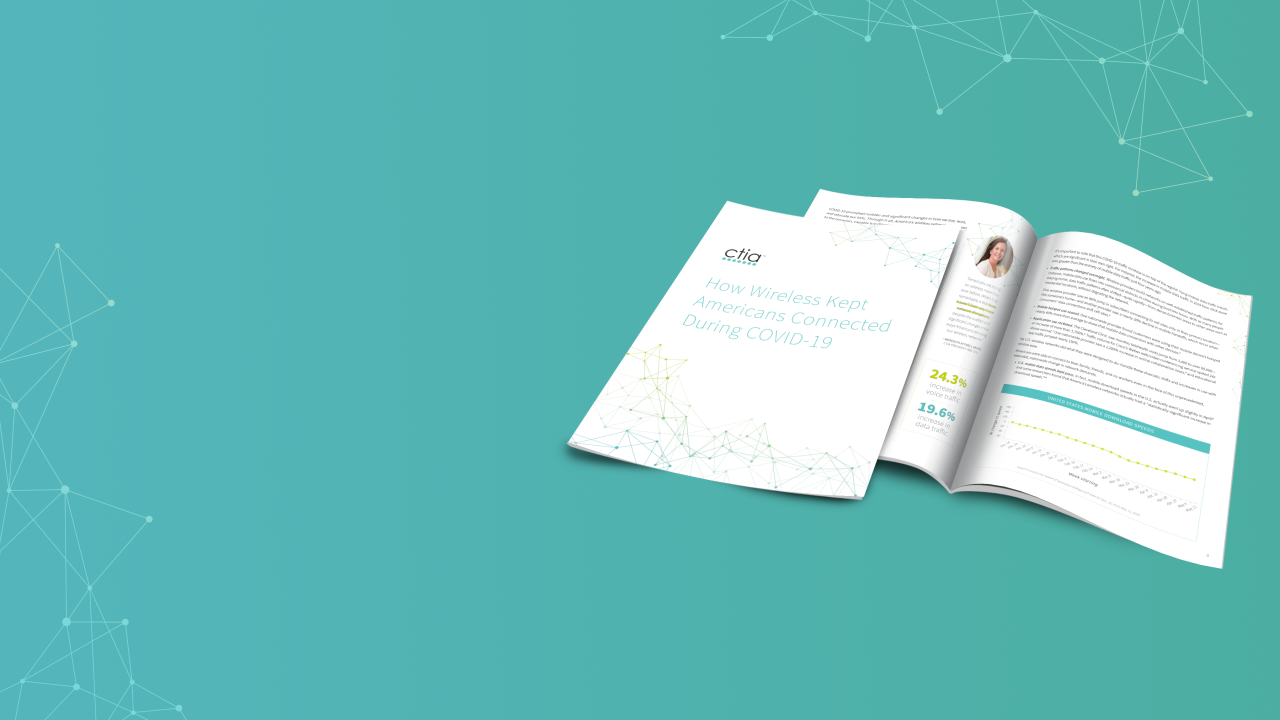
How Wireless Kept Americans Connected During COVID-19
CTIA today released a new report that helps put some data and context around what we all have experienced online in the past few months. In the face of huge societal changes caused by COVID-19, our wireless networks were there when we needed them most.
Overnight, COVID-19 transformed the way we live and work. And while we all hope the worst is behind us, the reality is that this pandemic has been the ultimate stress test across our nation. It’s challenged communities and industries in ways we never anticipated. It’s proven that smartphones really are the critical lifeline that keeps us connected to our friends and family, our colleagues and even our teachers and doctors.
That’s why I’m so proud of the wireless industry’s COVID-19 response. While a lot of other industries struggled, we didn’t miss a beat. Almost overnight, as cities and states shut down, mobile voice and data traffic exploded. We saw sustained increases up to 20 percent more than normal. To put that in perspective, that’s roughly eight months’ worth of data growth packed into about a week.
America’s wireless networks were able to handle these dramatic increases, unlike many other countries. In places like China, speeds were down 40% and in Europe, speeds were down ~15% in countries like Spain. In fact, mobile data speeds in the U.S. actually went up slightly in April, and 83% of consumers said they were satisfied with their mobile internet.
That’s because America’s competitive wireless industry builds for the future every day. We’ve invested $286B over the last ten years to keep up with exploding demand for mobile data.
And when the pandemic hit, we didn’t stop. While most Americans were sheltering at home, wireless engineers were out increasing capacity, optimizing networks, monitoring traffic and shifting resources, often in real time, to keep our mobile networks performing well wherever you were.
Wireless technicians have also been working tirelessly—and as safely as possible, following CDC guidelines—to deploy new cell sites and deploy additional spectrum assets quickly and efficiently.
America’s wireless consumers also benefited from the help of the FCC, under the leadership of Chairman Pai, who moved quickly to approve spectrum leases freeing up additional capacity.
As proud as I am of how we maintained our networks, I’m even prouder of the way our industry stepped up to help Americans struggling with the overwhelming challenges created by this pandemic. Wireless providers waived overage charges and added data to wireless plans, provided free service to kids who didn’t have internet access and offered free service to front-line health workers.
It’s no surprise to see wireless companies lead Forbes’ ranking of the nation’s top corporate responders to COVID-19. They’ve earned it with how they have responded to the crisis with compassion and hard work.
But while we can take real pride in our accomplishments, the pandemic also underscores that there’s a lot more work to do. This crisis exposed the very real problems of the digital divide. I’m proud of our work to try to mitigate some of those challenges, and in particular, to make sure as many kids learning from home are connected as we can.
But these aren’t problems we can solve by ourselves, and we’re committed to working closely with policymakers to address the digital divide to get more Americans online to ensure online opportunities are available to all.
One reason for optimism is our nation’s continued progress towards building and leading the emerging 5G economy. Despite the challenges caused by Covid-19, our industry didn’t slow down building for tomorrow. Today, 60% of Americas are covered by initial 5G deployments and we’re on track to have three nationwide 5G networks this year.
And that’s important, because in the wake of a crisis that put a spotlight on the need for innovation in healthcare and education, 5G will help boost our economic recovery, create jobs and enable exciting new telehealth and remote learning opportunities. Policymakers can help by freeing up spectrum to help us meet tomorrow’s demands and facilitating faster deployment and investment in our 5G future.
This crisis isn’t behind us, and the societal challenges it exposed will take a long time to address. I’m incredibly thankful of the role the wireless industry has been able to play to help Americans keep their lives as normal as possible. I’m equally optimistic of the role we can play in our nation’s recovery and healing.
See this blog on the CTIA Website here.
